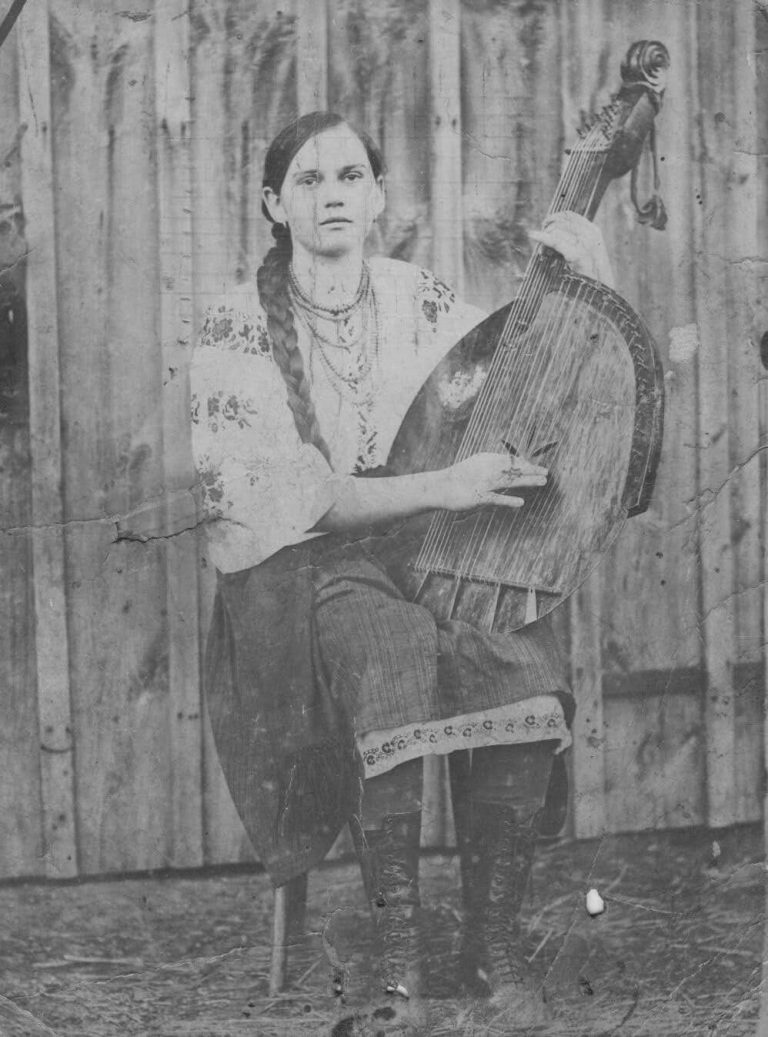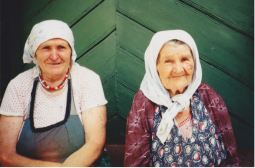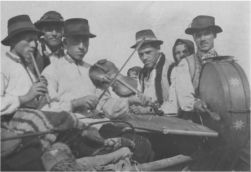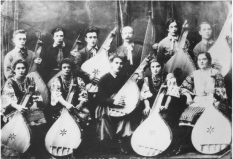
Kobzari and lirnyky

William Noll first conducted expeditions to record and interview performers who were continuing many of the music practices of the blind peasant minstrels of Ukraine, the famous kobzari i lirnyky (kobzars and lirnyks) in 1992 – together with Institute of Art, Folklore, and Ethnology Studies (IMFE) colleagues, they traveled through the regions Chernihiv, Sumy, Poltava, and Dnipropetrovsk. Noll recorded some of the few then-living performers (most of whom were not blind) as well as their wives, children, guides, students, and scholars. The time period of the expedition was one of great turmoil. People were not happy and many did not want to speak about the atrocities of the 1930s while being recorded on cassette tape, but usually when they heard that the researcher was American, they decided to participate. It is fortunate that this expedition occurred, and we have extraordinary evidence of Ukrainian expressive culture of an age passing from living memory.
Noll recorded Georgy Tkachenko (Kyiv), Anatolii Parfinenko (Kharkiv), Vasyl Perepeluk (Vinnytsia), Mykola Budnyk (Irpin), Mykhailo Khai (Brovary) and many other kobzar/bandura and lira players during separate trips during 1992-1995. He was assisted by Mykhailo Khai, Oles Sanin, and others.
The project that utilized the wax cylinder recordings of past performers, which were made by Klyment Kvitka, Opanas Slastion, and others in the late 1800s and early 1900s, deserves special mention. These cylinders are held in the archive of IMFE. They were on Noll’s initiative, with the assistance of then archivist Joe Hickerson, transported to the Library of Congress (USA), restored and dubbed onto reel-to-reel tapes. As a member of the project, Noll received a copy of the tapes. In 2024, we digitized these tapes which are presented on the platform of “great transformations”.




